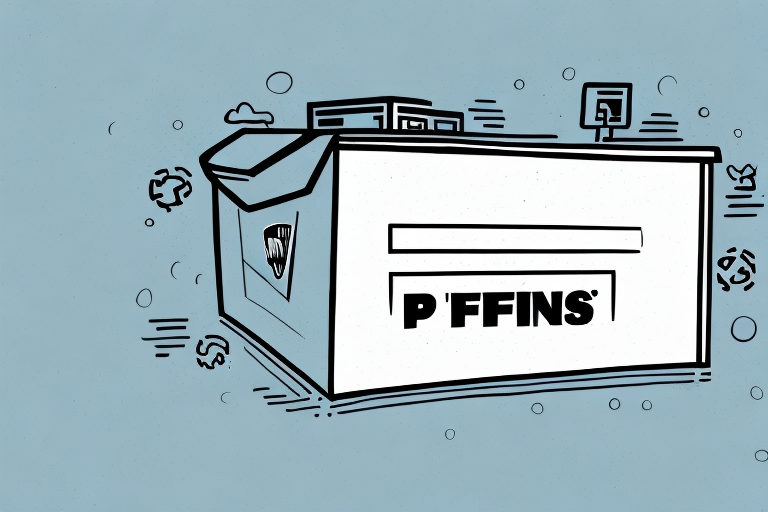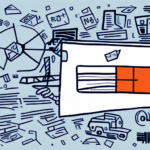Understanding UPS Shipping Rates for Big Boxes
If you're shipping large or heavy items through UPS, it's crucial to understand how their shipping rates work. This comprehensive guide covers everything you need to know about UPS shipping rates for big boxes, including how to calculate them, the factors that affect them, and strategies to save money. We'll also explore UPS shipping options for large and heavy packages, best practices for packaging and labeling your big box, and tips on tracking your shipment and handling any issues that may arise. Whether you're shipping for personal or business reasons, this article will help you navigate the sometimes complex world of UPS shipping rates.
How to Calculate UPS Shipping Rates for Big Boxes
Calculating UPS shipping rates for big boxes might seem daunting, but it's a straightforward process once you understand the factors involved. Rates are determined by several key factors, including:
- Package Dimensions: The size of your box directly impacts the rate. UPS uses dimensional weight pricing, which considers the volume of the package.
- Weight: Heavier packages generally incur higher shipping costs.
- Destination: Shipping costs vary based on the distance and destination, including international shipments.
- Shipping Speed: Faster shipping options like air freight or expedited services will cost more than standard ground shipping.
The most efficient way to calculate your shipping rate is by using the UPS Rate Calculator, which provides an accurate estimate by considering all relevant factors. Additionally, the UPS Rate and Service Guide offers detailed information about pricing and available services.
UPS offers a variety of shipping options, including ground, air, and international services. Depending on your needs, upgrading to a faster shipping option like UPS Next Day Air or UPS 2nd Day Air may be beneficial. While these options are more expensive, they provide quicker delivery times, which can be essential for time-sensitive shipments.
Another important factor in calculating UPS shipping rates is the packaging materials you use. Utilizing sturdy, high-quality boxes and packing materials ensures that your package arrives safely and intact. If you're uncertain about the best packaging materials, UPS offers a variety of resources and guides to help you select the right materials for your shipment.
The Factors Affecting UPS Shipping Rates for Big Boxes
Several factors influence UPS shipping rates for big boxes:
- Size and Weight: UPS has specific size and weight restrictions for different shipping methods. Exceeding these limits can result in additional charges or the need for special handling.
- Distance: The farther your package needs to travel, the higher the shipping cost.
- Service Level: Choosing expedited or overnight shipping increases the rate compared to standard ground shipping.
- Package Value: High-value packages may require additional insurance, affecting the overall cost.
- Special Handling: Items that are fragile or require special packaging may incur extra fees.
UPS also provides discounts for certain types of shipments, such as those sent to a business address or prepaid online. Additionally, packages that require extra handling, like fragile items or those needing special packaging, may incur additional fees. It's advisable to double-check your package's dimensions, weight, and any special requirements to ensure you receive the most accurate shipping rate.
For the latest information on UPS shipping rates and factors that may affect your shipment, refer to the UPS Rate Guide.
Box Size and Weight Limits When Shipping with UPS
When shipping a big box with UPS, it's essential to adhere to their size and weight limits:
- Maximum Size: For domestic shipments, the maximum size is 165 inches in length and girth combined (length + 2[width + height]).
- Maximum Weight: Most UPS services have a weight limit of 150 lbs per package. However, UPS Freight can handle heavier packages.
For international shipments, size and weight restrictions vary depending on the destination country and shipping method. It's important to check the specific guidelines for each country to avoid any issues.
UPS also has specific packaging guidelines to ensure the safe transit of your items:
- Use sturdy, new boxes capable of withstanding normal handling during transit.
- Cushion the contents adequately using materials like bubble wrap or foam inserts.
- Seal the package securely with high-quality packing tape.
Additionally, certain items like hazardous materials, firearms, and alcohol have extra restrictions and requirements when shipping with UPS. Always consult the UPS Dangerous Goods guidelines if you're shipping restricted items.
For the most accurate and up-to-date information, refer to the UPS Rate Guide.
How to Save Money on UPS Shipping Rates for Big Boxes
Shipping large or heavy items can be costly, but there are several strategies to reduce UPS shipping rates for big boxes:
- Choose UPS Ground: UPS Ground is typically more affordable than expedited shipping options, making it a cost-effective choice for non-urgent shipments.
- Leverage UPS Discount Programs: Programs like UPS My Choice or UPS Connect offer discounts and additional benefits.
- Use Third-Party Shipping Services: Third-party providers may offer lower rates than UPS, especially for bulk shipments.
- Optimize Packaging: Use the smallest box possible while ensuring your items are protected. Efficient packaging reduces dimensional weight, lowering shipping costs.
- Compare Carrier Rates: Alternatives like FedEx or USPS may offer competitive rates for large or heavy shipments. Comparing rates can help you find the most economical option.
- Shipping During Off-Peak Times: Shipping during less busy periods can sometimes result in lower rates.
Additionally, consider using packing materials such as bubble wrap or packing peanuts to fill any empty space in your box. This not only protects your items but can also help reduce the overall size of the package, potentially lowering the shipping cost.
For more tips on saving money with UPS, visit the UPS Rate Guide.
UPS Shipping Options for Large and Heavy Packages
UPS offers a variety of shipping options tailored for large and heavy packages:
- UPS Ground: The most common and cost-effective option for less time-sensitive packages.
- Expedited Shipping: Options like UPS Next Day Air and UPS 2nd Day Air provide faster delivery times for more urgent shipments.
- UPS Freight: Ideal for larger or heavier packages that exceed standard size and weight limits.
When shipping large or heavy packages, additional documentation or labeling may be required. This can include:
- Hazardous materials paperwork
- Special handling instructions
- Labeling for fragile items
Be sure to consult the UPS Large Package Shipping guidelines for specific requirements.
For international shipments, UPS provides several options, including air freight, ocean freight, and customs clearance services. These services help navigate the complexities of international shipping, ensuring your package arrives on time and in good condition.
Explore all UPS shipping options on the UPS Shipping Options page.
How to Package Your Big Box for Safe and Secure Shipping with UPS
Proper packaging is essential for ensuring the safe and secure shipping of your big box with UPS. Follow these best practices:
- Choose a Sturdy Box: Select a box that is appropriate for the weight and size of your items. Reinforced or double-walled boxes offer extra protection.
- Add Padding: Use cushioning materials like bubble wrap, foam inserts, or packing peanuts to protect your items from damage during transit.
- Seal Securely: Use high-quality packing tape to seal all seams and edges of the box. Reinforce weak spots to prevent the box from tearing.
- Label Clearly: Ensure that the shipping address and tracking information are clearly visible on the package.
Consider any special handling requirements for your items:
- Fragile Items: Use additional cushioning materials and mark the package as fragile to inform handlers.
- Perishable or Temperature-Sensitive Items: Utilize insulated packaging or include dry ice to maintain temperature during transit.
Always check with UPS for specific packaging guidelines and restrictions, especially when shipping items that require special handling. Refer to the UPS Packaging Guidelines for detailed instructions.
Best Practices for Labeling Your Big Box When Shipping with UPS
Accurate and clear labeling is vital for ensuring your package reaches its destination without issues. Follow these best practices when labeling your big box for UPS shipping:
- Include Essential Information: Ensure the label contains the recipient's full name and address, your return address, and any special instructions or handling requirements.
- Use Waterproof Labels: Protect your labels from moisture by using waterproof labels or placing them inside a clear plastic pouch.
- Secure the Label: Affix the label securely to the package, avoiding placement on seams, folds, or edges where it might be damaged or obscured.
- Visibility and Readability: Place the label in a visible area and ensure it's easily readable. Avoid covering the label with tape or other packaging materials.
- Indicate Special Handling: Use additional labels or markings to indicate if the package contains fragile or hazardous items.
Proper labeling helps prevent delays and ensures that your package is handled correctly throughout the shipping process. For detailed labeling requirements, consult the UPS Rate Guide.
Understanding the Insurance Coverage Included in UPS Shipping Rates for Big Boxes
Most UPS shipping rates include basic insurance coverage, typically up to $100-$200 per package. If your item is valued higher than this amount, you can purchase additional insurance coverage through UPS or a third-party provider.
- Additional Insurance: UPS offers various insurance options for high-value items, such as jewelry, electronics, or artwork. These options can provide higher coverage limits and may include specialized packaging requirements.
- Third-Party Insurance: Alternatively, you can opt for third-party insurance providers that may offer competitive rates and comprehensive coverage.
When purchasing additional insurance, carefully review the terms and conditions to understand what is covered and any exclusions that may apply. Certain items and circumstances may not be covered under standard insurance policies.
For more information on UPS insurance options, visit the UPS Insurance Services page.
How to Track Your Big Box Shipment with UPS
Tracking your big box shipment with UPS is straightforward and provides peace of mind throughout the shipping process. Here's how to effectively track your package:
- Use Your Tracking Number: After shipping your package, you'll receive a tracking number. Enter this number on the UPS Tracking page or use the UPS mobile app to monitor the status of your shipment in real-time.
- Sign Up for UPS My Choice: UPS My Choice allows you to receive real-time updates via email or text message, providing notifications about your package's status and estimated delivery times.
- Contact UPS Customer Service: If you encounter any issues with your shipment, UPS Customer Service is available 24/7 to assist you. You can reach them through the UPS Contact page.
UPS also offers additional tracking options for enhanced visibility:
- UPS Tracking Plus: Provides enhanced tracking features for business customers, including notifications for multiple events along the shipping journey.
- Shipment Analytics: Businesses can utilize UPS's shipment analytics tools to gain deeper insights into their shipping operations.
For more tracking options and features, visit the UPS Tracking Options page.
What to Do If Your Big Box Shipment Is Lost or Damaged by UPS
Despite UPS's efforts to ensure safe and timely delivery, issues like loss or damage can occur. If your big box shipment is lost or damaged, follow these steps to resolve the issue:
- Contact UPS Immediately: Reach out to UPS Customer Service as soon as you notice the issue. Prompt reporting can expedite the resolution process.
- File a Claim: Initiate a claim through the UPS Claims process. You'll need to provide details about the shipment, including the tracking number, description of the contents, and the extent of damage or loss.
- Provide Documentation: Gather and submit necessary documentation, such as photos of the damaged item, the original shipping receipt, and any relevant correspondence.
- Follow Up: Monitor the progress of your claim and maintain communication with UPS representatives to ensure timely resolution.
UPS will investigate the claim and determine the appropriate compensation based on the coverage and circumstances surrounding the incident. It's essential to keep all records and evidence related to the shipment to support your claim effectively.
For detailed instructions on filing a claim, visit the UPS Claims Process page.
Comparing the Cost and Services of Other Shipping Carriers for Big Boxes
When shipping big boxes, it's beneficial to compare the cost and services of different shipping carriers to ensure you're getting the best value for your needs. Here’s a comparison of UPS with other major carriers:
- FedEx: Known for its reliable expedited services, FedEx offers competitive rates for heavy and large shipments. Services like FedEx Ground and FedEx Freight cater to different shipping needs. FedEx also provides extensive tracking and delivery options similar to UPS.
- USPS: The United States Postal Service can be a cost-effective option for smaller large packages. Services like Priority Mail and Retail Ground offer affordable rates, though they may have more restrictive size and weight limits compared to UPS and FedEx.
- DHL: Ideal for international shipping, DHL provides extensive global coverage and competitive rates. However, it may not be as cost-effective for domestic shipments within the United States.
When comparing carriers, consider the following factors:
- Shipping Speed: Determine how quickly you need your package to arrive and choose a carrier that offers suitable delivery times.
- Cost: Compare shipping rates based on the size, weight, and destination of your package. Use online rate calculators provided by each carrier for accurate estimates.
- Service Reliability: Consider the carrier's track record for on-time deliveries and handling of large packages.
- Additional Services: Evaluate the availability of services like insurance, tracking, and customer support.
By thoroughly comparing the offerings of UPS, FedEx, USPS, and other carriers, you can select the best shipping provider that aligns with your budget and service requirements.
For more detailed comparisons, visit the UPS Rate Guide and similar resources from other carriers.






















